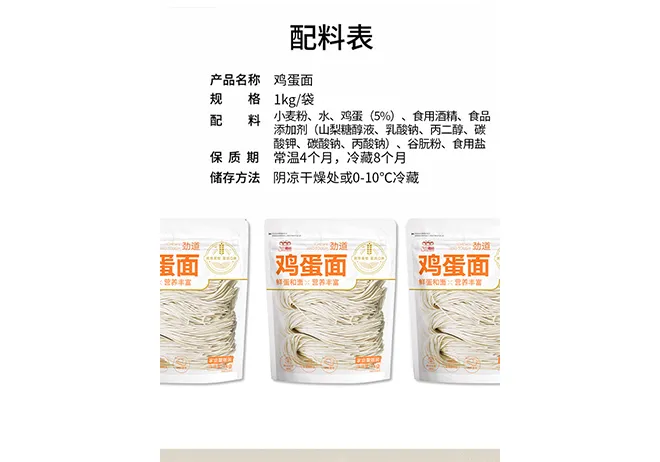asian handmade noodles
Asian Handmade Noodles A Culinary Journey Through Tradition and Taste
Noodles are a staple in many Asian cuisines, cherished not only for their versatility but also for their rich cultural heritage. Among the various types of noodles, handmade Asian noodles stand out as a labor of love, offering a unique texture, flavor, and experience that mass-produced noodles simply cannot replicate. This article explores the art of making Asian handmade noodles, delving into the traditional methods, popular varieties, and the beloved dishes they create.
The Art of Handmade Noodles
Making handmade noodles begins with simple ingredients—flour, water, and sometimes eggs. The process is both an art and a science. The key lies in the technique the dough must be kneaded to achieve the right elasticity, then rested to allow the gluten to develop. It is this gluten that gives noodles their characteristic chewiness. Once the dough is ready, it is rolled out thinly and cut into strips, or in some cases, hand-pulled into delicate strands.
Each region in Asia has its own unique approach to noodle-making. For instance, in China, knife-cut noodles, known as “dao xiao mian,” are popular for their rustic texture, while in Japan, udon noodles are thick and chewy, typically made from wheat flour. The regional variations not only highlight the diversity of Asian cuisine but also reflect the local ingredients and culinary traditions that shape them.
Popular Types of Handmade Noodles
1. Chinese Noodles Chinese cuisine boasts an impressive variety of handmade noodles. Lan Zhou beef noodles, known for their thick, chewy texture, are made from wheat flour and are often served in a rich, flavorful broth. Another favorite is “biang biang” noodles, characterized by their broad, flat shape and a name derived from the sound produced during their preparation.
2. Japanese Udon Udon noodles are thick, chewy, and typically served in a savory broth. The process of making udon is simple yet meticulous. The dough is kneaded and rolled, then cut into thick strips. Udon can be enjoyed hot in soup or cold with dipping sauce, making them a versatile choice for any season.
asian handmade noodles

3. Korean Noodles Korean cuisine features handmade noodles such as “kal-guksu,” which translates to “knife noodles.” These soft, chewy noodles are often served in a hearty broth with vegetables and meat, showcasing the rustic nature of Korean cooking. Another popular variety is “jajangmyeon,” which is mixed with a black bean sauce for a savory dish.
4. Thai Rice Noodles While rice noodles are typically associated with Thai cuisine, handmade versions add an authentic touch to dishes like pad Thai and kuay teow. The process involves soaking rice flour and water, then steaming the mixture to create soft, chewy noodles that can be enjoyed in various stir-fries and soups.
The Cultural Significance
Handmade noodles are more than just a food item; they embody cultural identity and traditions passed down through generations. In many Asian cultures, the act of making noodles is a communal event, often involving family and friends gathering to share stories and laughter while preparing the meal. This social aspect of noodle-making strengthens ties between family, community, and culture.
Moreover, certain handmade noodles are associated with specific festivals and celebrations. In Chinese culture, for example, long noodles symbolize longevity, and they are often served during birthdays and New Year celebrations. The preparation and consumption of these noodles reflect wishes for prosperity and health in the coming year.
Conclusion
Asian handmade noodles represent a culinary journey filled with history, tradition, and flavor. Their unique textures and taste, coupled with the cultural significance they hold, make them a beloved dish across Asia and beyond. Whether enjoyed in a steaming bowl of soup or as part of a vibrant stir-fry, handmade noodles continue to connect people to their roots, inviting everyone to appreciate the artistry behind each strand. As the world becomes increasingly globalized, the charm of handmade Asian noodles serves as a delicious reminder of the rich tapestry of flavors and traditions that define the culinary landscape of Asia.
-
Fast Cook Noodles: Convenient Staples for Modern LifestylesNewsAug.23,2025
-
Italian Noodles: Versatile Staples of Global CuisineNewsAug.23,2025
-
Italian Noodles: A Timeless Culinary HeritageNewsAug.23,2025
-
Instant Cold Noodles: A Refreshing Culinary ConvenienceNewsAug.23,2025
-
Buckwheat Noodles: The Art and Nutrition of Handmade SobaNewsAug.23,2025
-
Low Calorie Soba Noodles: A Nutritious Choice for Healthy EatingNewsAug.23,2025
-
The Wholesome Delight of Organic NoodlesNewsAug.15,2025
Browse qua the following product new the we







